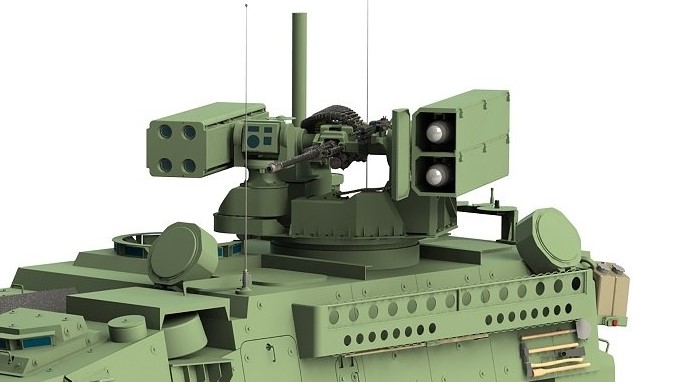
SHAH ALAM: Generic RWS, Plan B. As you are aware the Army and RMN (as well as the MMEA) are probably/likely on the look out for a remote weapon station (RWS) for their future vehicles or ships. That said the need for a new RWS is likely higher for the Army as it is looking to recapitalise its armoured vehicles as well as its fire support vehicles.
The RMN and MMEA already operate the MSI-Defence Sigma and the Aselsan SMASH/STAMP RWS on its vessels and patrol boats. While both of these and the ones used by the Army (Reutech, on the Gempita) are already good enough, buying a common generic RWS – sharing the same components – between the services, could probably save us a lot of money – on maintenance and economic of scale.
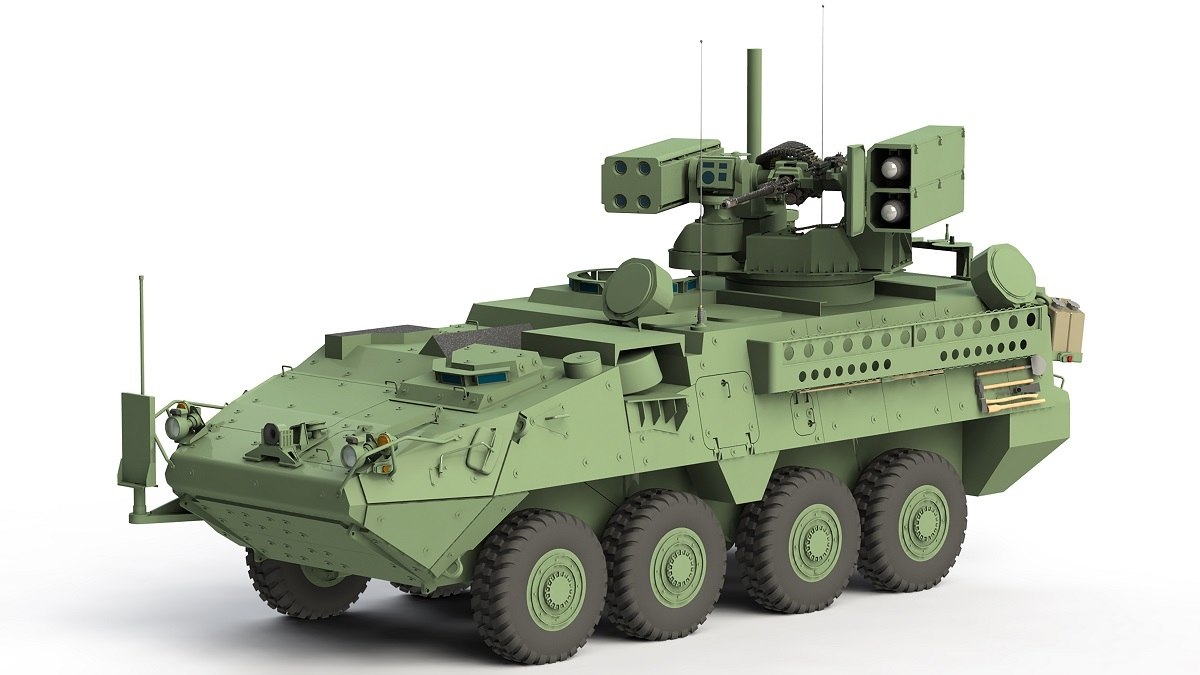
A CGI of the US Amry Initial Maneuver Short-Range Air Defense system. The RIWP turret is fitted with Stinger and Hellfire missiles as well as a 30mm gun. The discs on the front and sides are the radar antennas.
An example of a generic RWS is the Moog Defence RIWP which can be use for land and naval solutions. The US Army recently downselected the Leonardo DRS solution for its Initial Maneuver Short-Range Air Defense (IM-SHORAD) effort which uses a RIWP turret as the basis for its offer.

A close up view of the RIWP turret for the US Army IMSHORAD capability.
The Leonardo DRS system, when integrated on the Stryker A1 platform, will provide maneuver Brigade Combat Teams with a full “detect-identify-track-defeat” capability required to defeat UAS, rotary-wing and fixed-wing threats. Leonardo DRS expects to receive the prototype contract in August of this year.
The system, developed by Leonardo DRS’s Land Systems business unit, integrates mature technologies from industry teammates and partners, including Moog’s Reconfigurable Integrated-weapons Platform (RIwP), Raytheon’s Stinger missiles and Rada’s Multi-mission Hemispheric Radar. The IM-SHORAD solution provides both hard and soft kill capabilities to the warfighter while minimizing impacts on the mobility of the Stryker.
More on the Moog Defence Reconfigurable Integrated- Weapons Platform.
The Reconfigurable Integrated-weapons Platform (RIwP) is a revolutionary remote turret, providing the warfighter overmatch capability and increased survivability to exceed current and emerging threats across the full spectrum of conflict. In many configurations RIwP medium caliber precision lethality, for tactical and combat platforms, provides greater firepower than most currently fielded combat systems ensuring advantages over ground and air threats. Current configurations include the option for multiple missiles, direct fire weapons and sight combinations. All direct fire weapons feature reload under armor for increased crew protection.
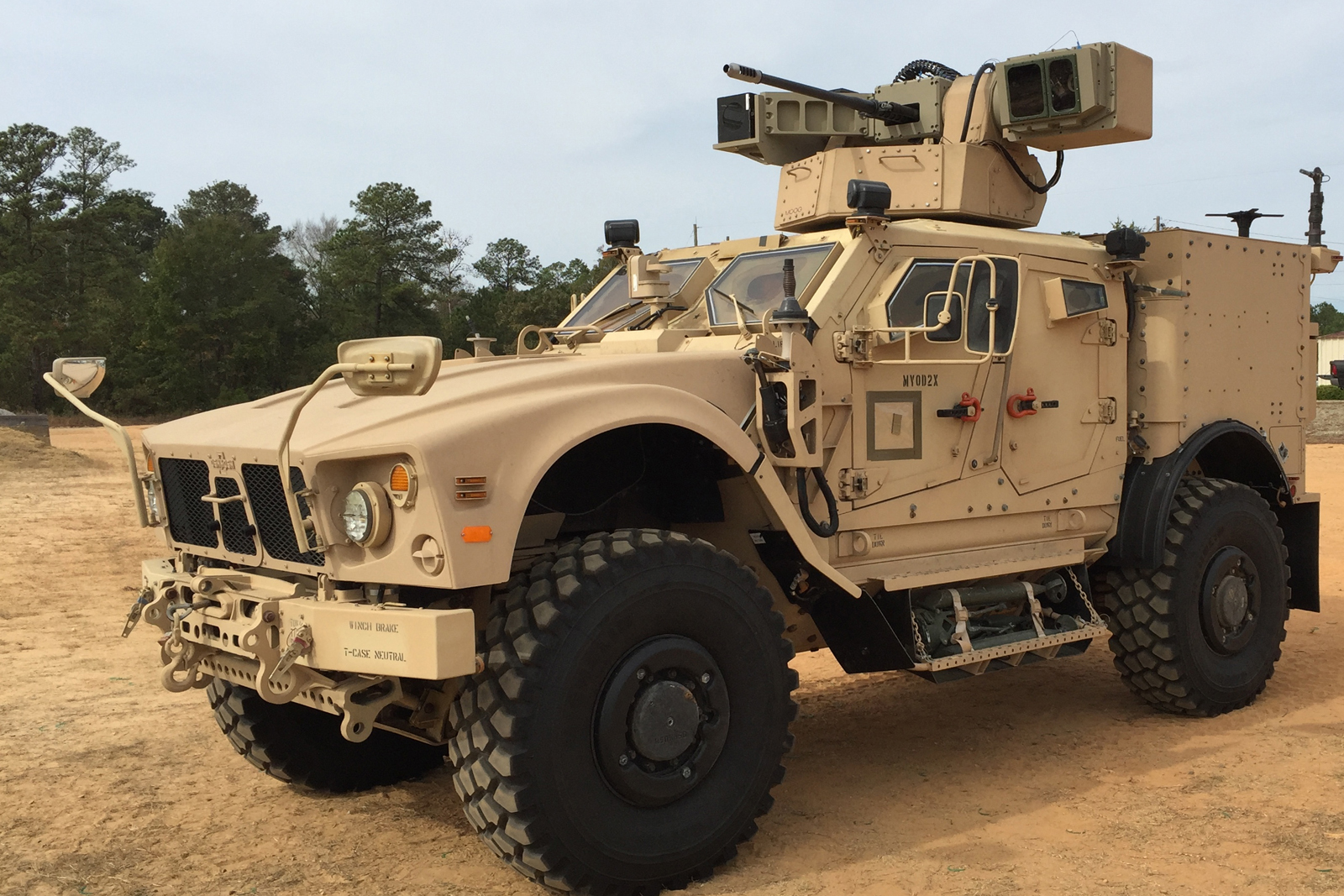
Although MOOG has already configured 10 RIWP with all sorts of guns and missiles combinations, we can still opt to develop the turrets with the guns and missiles combination of our own (as shown by the one offered by Leonardo, above). The cheapest way is to buy the already configured RIWP turrets on our vehicles or ships, of course.
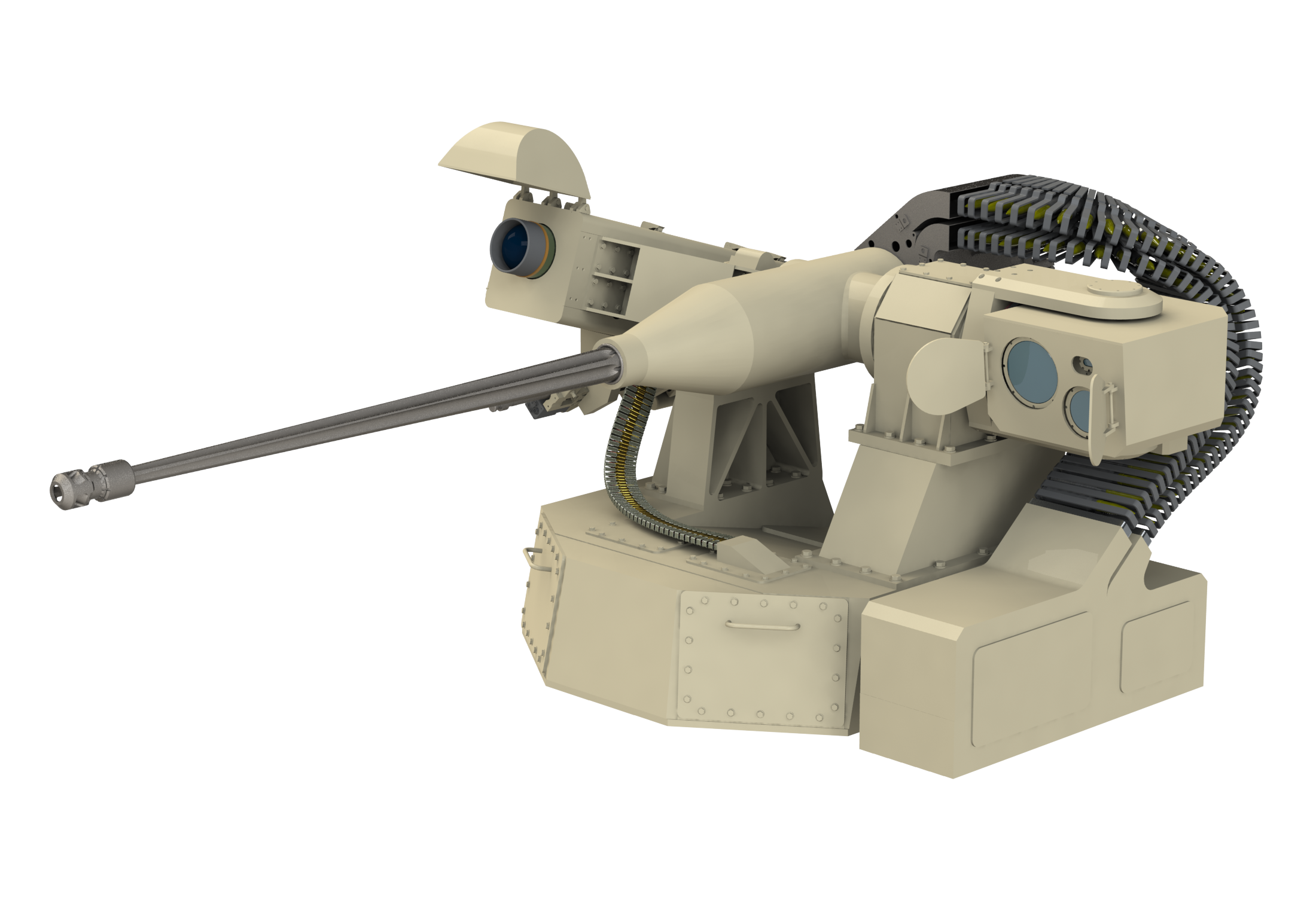
The RIWP could be integrated on the Condor replacement vehicle or the upgraded Condor, the future Infantry and fire support vehicle, when fitted with anti-tank and anti aircraft missile as well as the future replacements of the Adnans and KIFV as well.
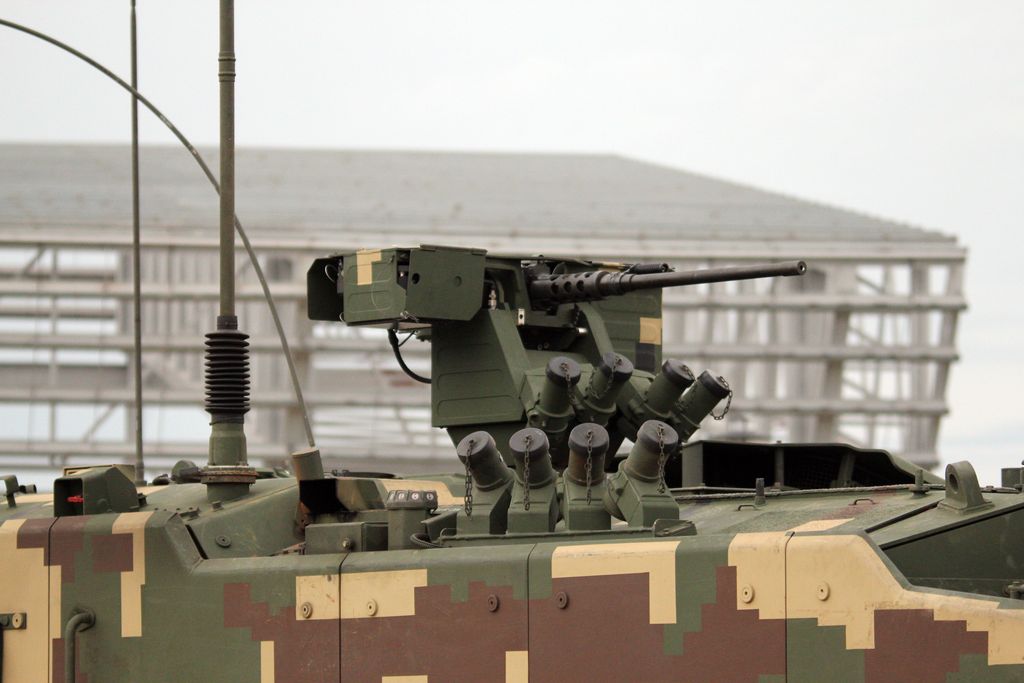
The same turrets could also be fitted on newly built Gempita including an air defence variant, if the Army decides to buy more of them of course.
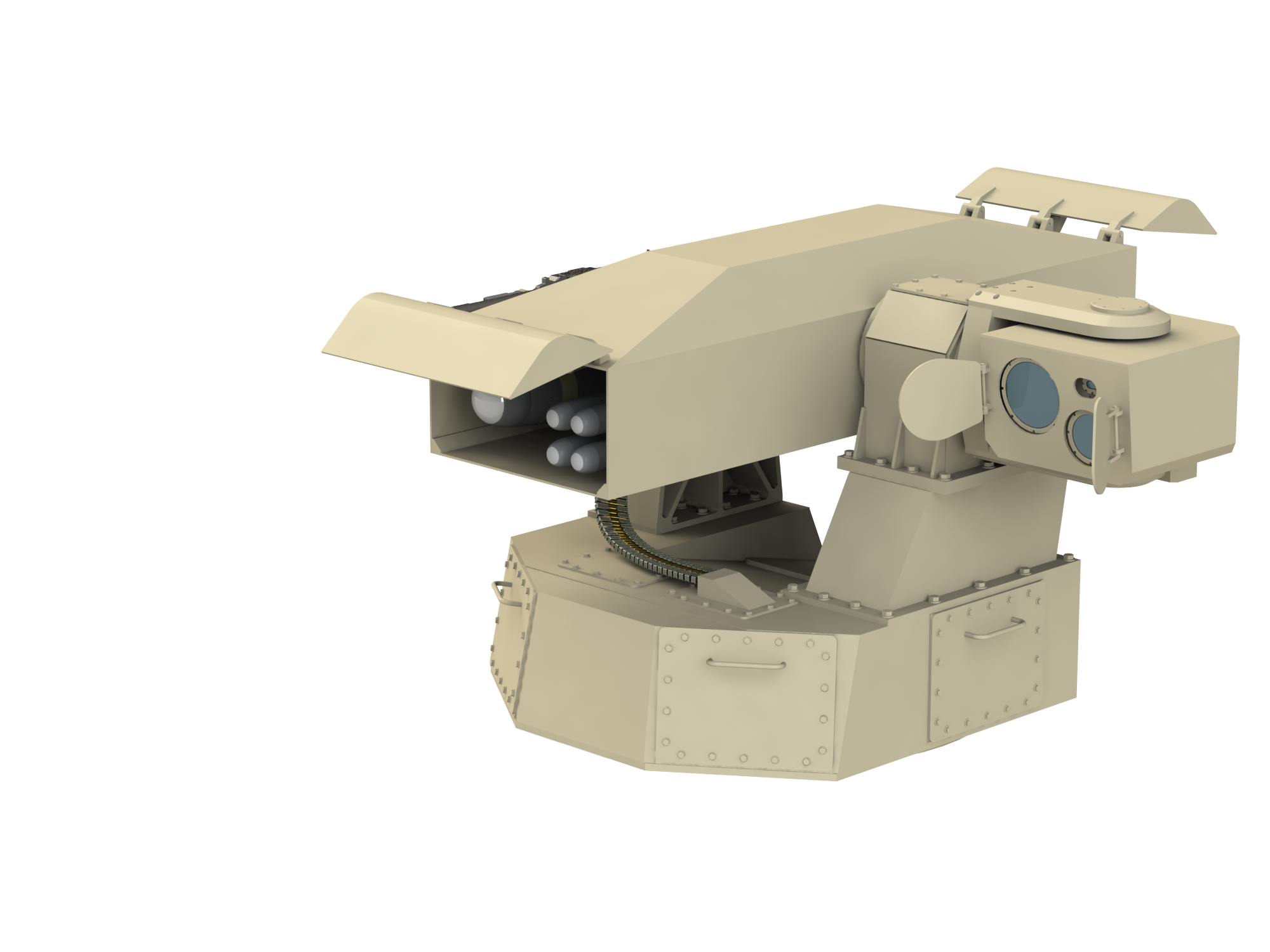
Apart from the Army vehicles, the same turrets and weapons configurations could also be fitted on future vessels, including the MRSS and patrol boats of the RMN and MMEA giving them a stand-off surface and short range anti aircraft capability (if the gun and missile combo is selected). It is certainly better than having just a 30mm RWS and a cheaper option compared to the 57mm or 76mm guns. This would be a lot more accurate than the pray and spray Gatling or GPMGs.
— Malaysian Defence
If you like this post, buy me an espresso. Paypal Payment

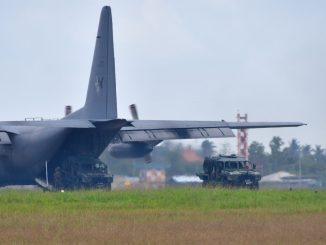
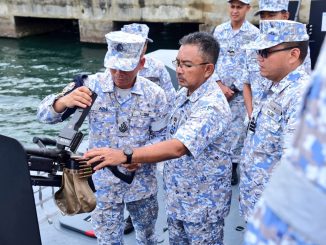
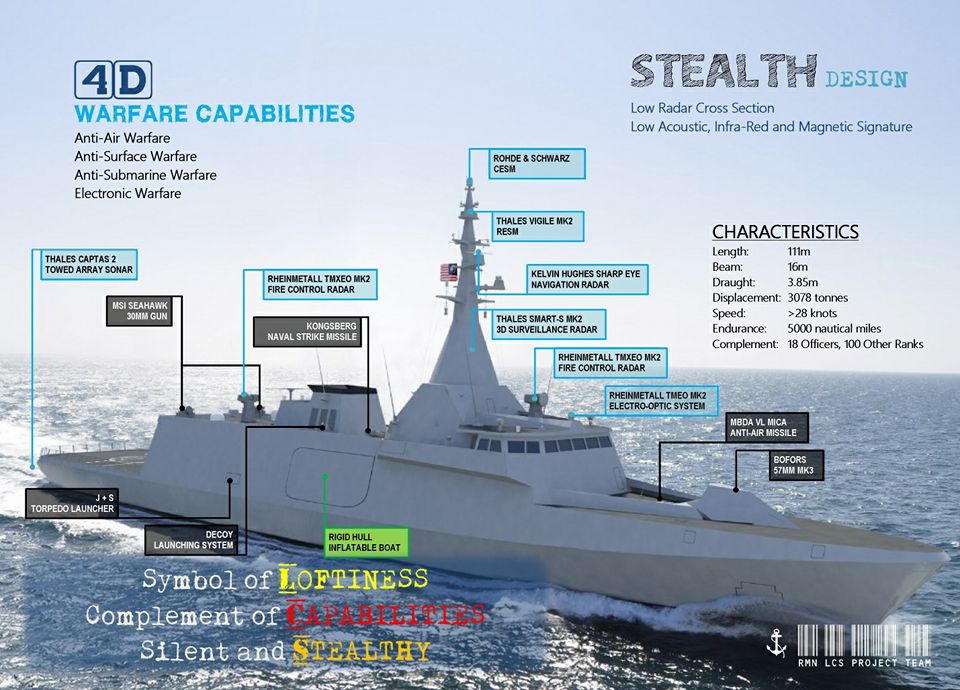
When discussing RCWS you need to differentiate lightweight systems with 0.50 machine gun systems or smaller, and something with a 30mm cannon, which is usually as big as a normal 2 man turret.
I think here is a more appropriate to discuss on 155mm howitzers and armoured vehicles.
My take:
155mm Howitzers
To be added but not to replace the 105mm. Additional used G5 from Qatar and new spare barrels bought from South Africa/China. 2 regiments, 1 semenanjung and another in east malaysia. The 1 regiment of M109A5+ to support the armoured brigade. all current 105mm regiments to be recapitalised with new 105mm howitzers. Why keep 105mm howitzers? IMO because 155mm power is too big in low intensity conflicts and urban warfare such as Marawi.
1 RAD para melaka LG-1 105mm
2 RAD mechanized johor Hawkeye 105mm J-LTV (supports 7th brigade)
3 RAD perak LG-1 105mm
4 RAD sarawak LG-1 105mm
5 RAD kelantan LG-1 105mm
6 RAD sabah LG-1 105mm
7 RAD mechanized pahang Hawkeye 105mm J-LTV (supports 4th brigade)
21 RAD negeri sembilan G5 155mm
22 RAD mechanized negeri sembilan M109A5+ 155mm (supports 1st brigade)
23 RAD sabah G5 155mm
51 RAD johor ASTROS MLRS
52 RAD kedah ASTROS MLRS
61 RAD johor ARTHUR artillery locating radar
Armour, tracked or wheeled?
Both have its place. Tracked can navigate rough terrains and nimble in build up areas. Wheeled can self deploy quickly to far away places.
My ideal orbat
1st Armour Brigade (Rasah Camp, Seremban, N. Sembilan)
11th Royal Armour Corps (Syed Sirajuddin Camp, Gemas, Negeri Sembilan) 48 PT-91M 30 MIFV
12th Royal Armour Corps (Sunggala Camp, Port Dickson) 48 PT-91M 30 MIFV
14th Royal Malay Regiment (Rasah Camp, Seremban, Negeri Sembilan) 100 Adnan
4th Mechanised Brigade (Batu 10 Camp, Kuantan, Pahang)
19th Royal Malay Regiment (Mech) (Gubir Camp, Sungai Petani, Kedah) 80 AV8 20 AM4
7th Royal Ranger Regiment (Mech) (Batu 5 Camp, Mentakab, Pahang) 80 AV8 20 AM4
12th Royal Malay Regiment (Mech) (Daralockwood Camp, Kuantan,
Pahang) 80 AV8 20 AM4
505th Territorial Army Regiment (Mech) (Teluk Sisik Camp, Kuantan,
Pahang)
1st Royal Armour Corps (Batu 10 Camp, Kuantan, Pahang) 46 AV8 46 J-LTV
7th Infantry Brigade (Mahkota Camp, Kluang, Johor)
5th Royal Malay Regiment (Batu Tiga Camp, Kluang, Johor) 70 AM4 30 J-LTV
10th Royal Malay Regiment (Majidee Camp, Johor Bharu, Johor) 70 AM4 30 J-LTV
6th Royal Ranger Regiment (Majidee Camp, Johor Bharu, Johor) 70 AM4 30 J-LTV
501st Territorial Army Regiment (Tebrau Camp, Johor Bharu, Johor)
AM4 is just a generic label for a MRAP that could replace the condor and priced at USD1 million or less each (cheaper than the proposed condor refurbishment). J-LTV is off the shelf US to cost USD0.4 million each. Adnans to be replaced with latest tracked IFV past 2030.
1 Mechanized Gempita
48+6 IFV25
8 IFV30
4 LCT30
6 Command
6 VINTAQS
2 ARV
6 AM4 ambulance
4 AM4 maintenance
4 AM4 logistic
6 AM4 APC
1 CAVALRY RGT (Kor Armor Diraja)
24 IFV30
12 LCT30
4 Command
2 Ambulances
2 ARV
2 Maintenance
46 J-LTV (12 HWC, 12 ATGM, 6 VINTAQS, 12 GP, 4 ambulance)
1 Mechanized (7th brigade)
54 AM4 APC
6 AM4 command
2 AM4 ambulance
4 AM4 maintenance
4 AM4 logistic
30 J-LTV (12 HWC, 6 ATGM, 8 GP, 4 ambulance)
The big IF, if those in charge of procurement wants to settle for the same brand of RIWP across the services.
I like the RIWS Picture at the Bottem, if RMN choose it. Might be a Save Cost for Us. As same for LMS and NGPV.
However for the Army, If The RIWS Include 40mm+Javelin+Starstreak Missile for AV8 or ACV-300 Might be a Good Chance to Balance the Army’s Assets.
PS: This is My Openion for RWS
Any type of RCWS will do.
As long as our boys are safe and sound. They’ll be glad to hear that they wont have to stick their entire upper body up a hole which screams SHOOT ME,
Plus adding on a sighting system on our existing 4×4 vics would make them much better at target aquisition. Hell anything would be be better than relying on MRK1 EYEBALLS.
Definetely think, this is a good decision if it happens.
P. S Marhalim would be cool seeing a post higlighting the lack of body armor /ballistic protection given to our troops
Just sayin plate carriers are the way to go these days, saved a ton of lives in the middle east why not here in malaysia
.. – ”IMO because 155mm power is too big in low intensity conflicts and urban warfare such as Marawi.”
Depends on the type of ” low intensity conflicts”. If the enemy is dug in a thick bunker or in an urban area under tonnes of concrete; then a 155mm would be useful. Granted, even an air dropped thousand pounder can have difficulty penetrating thick concrete but it’s useful that 155mm rounds have better penetrating ability compared to a 105mm one. Also, if there was a need to avoid ”collateral damage” and the target is under direct observation; a ”smart” 155mm round can be used.
… – ”Wheeled can self deploy quickly to far away places.”
A big advantage is that wheeled platforms tend to be less maintenance intensive; cheaper to operate. Over long distances they’re also much more comfortable to be in.
Whatever happens to deftech DETRAC RWS?
Reply
No idea, I dont keep track of products marketed by defence companies unless it moved on to be under serious consideration
@ azlan
” Also, if there was a need to avoid ”collateral damage” and the target is under direct observation; a ”smart” 155mm round can be used. ”
1. How much does a “smart” 155mm round cost compared to a basic 105mm shell?
2. How big is the logistic trail of a 155mm gun?
3. Can 155mm really replace 105mm guns in malaysia’s context? IMO both have its place in the context of malaysian doctrine, yes we do need a few more 155mm guns, but not to replace the 105mm, but to have 155mm units on both east and west malaysia.
.. – ”IMO because 155mm power is too big in low intensity conflicts and urban warfare such as Marawi.”
If one desires an indirect fire weapon that is “light,” cheap and mobile then 120mm mortars would suffice.
Since the ability to penetrate urban structures is a concern, it would be good to have 155mm guns widely available to provide support beyond a unit’s organic mortars. It would be preferable to relying on 105mm in some units and finding that it isn’t penetrating enough- or have enough range.
It’s probably for this reasoning that several armies are comfortable with a 155/120mm combination and don’t find it necessary to maintain 105mm guns aside from air mobile artillery.
.. – ”How much does a “smart” 155mm round cost compared to a basic 105mm shell?”
I was just explaining how it really depends on the type of ”LIC” …. What does cost have in relevance to the discussion? Also, ”smart” rounds will be used very sparingly, on selected targets – not as if they’ll be fired as if they’re going out of fashion and not all targets can be hit by a ”smart” round ……..
Getting back – Marawi was a ”LIC” but was no way comparable to Lahad Dato; as such whether a 105mm or 155mm is more suitable really depends on the type of ”LIC” conflict being waged .. A lesson learnt from Marawi is the need actually not for arty but direct fire weapons to knock out structures. The same lesson was learnt in various other urban engagements.
…. – ”How big is the logistic trail of a 155mm gun?”
I’m aware of that [mentioned previously] but we are talking about arty in relation to a ”LIC” here. Unless I was mistaken the ”topic” was the merits of a 105mmm VS 155mm in a ”LIC” scenario. If indeed an ”LIC” is scenario is faced; a larger logistical footprint would be less of an issue given the army isn’t being pressured in other areas like it would be in a full scale state on state conflict ….
… – ”yes we do need a few more 155mm guns, but not to replace the 105mm,”
This is open to debate. Pros and cons involved. There is a profound reason why some have binned their 105mms and some haven’t……
… – ”but to have 155mm units on both east and west malaysia.”
Given that we’ve already ordered more guns; I’d rather focus other other areas like C2, search and target acquisition capabilities, organisation, etc. We need those areas sorted out to reach the next stage of development. Yes everyone liked the idea of more heavy metal but the clear hard fact is that until we sort out other areas; it really doesn’t matter what we buy, how many we buy, where we base them or how many guns we have in a battery or a regiment; as we’ll be outclassed if faced with a state actor which has better C2 and search and target acquisition capabilities …….
Dodo – ”Marhalim would be cool seeing a post higlighting the lack of body armor /ballistic protection given to our troops”
There’s really not much to write. Many units have body armour but not enough to equip the whole unit. Similarly, troops seen on parade may have body armour but doesn’t mean there are enough to equip their units [like optics and NVGs] – it would be great if troops seen on parades are indicative of the army as a whole but alas they’re aren’t.
Yes we realise the need and importance of body armour but there simply isn’t the will at the moment to make it a priority. There are other areas that the powers above feel need addressing first. Troops along the Thai border have been seen with body armour but the bulk of our combat units [years after Lahad Dato] still don’t.
AM – ”If one desires an indirect fire weapon that is “light,” cheap and mobile then 120mm mortars would suffice.”
In an urban scenario direct fire weapons are essential. In Hue the most useful weapon was the 106mm RCL – the army didn’t see a need for the Ontos but the USMC did. In Syria and Lebanon ZSUs [mounted on MTLBs or BMPs] and Vulcan were very useful in the direct fire role.
As for indirect weapons; I see a need for 120mm mortars; not to replace howitzers [they can’t] but to supplement. The trick is to have them distributed where needed by those who need them rather than have them controlled by a higher HQ. The trick also [applies to arty also] is to be able to hit what aims at and to get rounds on target in time [we of course have touched on this area before]. If one has to go through a time consuming process [either because of strict ROEs or bureaucracy] then getting rounds on target on time will be an issue.
‘Azlan’
You’re reply is spot on .
As a smaller nation we should really be focusing on the safety of our troops as they are our strongest assets IMO.
We should be really taking notice at our little island neighbour, Although they are only in the prototype stages of the idea of using UGVs and UPVs they certainly are up to the idea of it
I rue the day if something should happen to our boys that could’ve been avoided by splashing a bit of dosh on the neccesities
Azlan “The trick is to have them distributed where needed by those who need them rather than have them controlled by a higher HQ. ”
Which is the precise reason that mortars are organic to the line units they support.
Responding to … ’s suggestion that we not field 155mm guns universally, in all probability it will lead to us being caught out not having the 155s when and where we need their range and penetrating ability. It would simplify this problem if we fielded 155s as standard.
You mentioned “pros and cons” of 105mm guns and I’d like to know more about these reasons, aside from cost and mobility.
Personally I feel the tradeoffs in these two areas are necessary sacrifices for the increase in capability.
There are armies that economise on their service arms but artillery is typically treated as a combat arm and not subject to the same thrift.
Also, do you think we could make do with fewer 155 guns and crews than we currently have in 105s, and if it would save money at the end of the day?
” The trick is to have them distributed where needed by those who need them rather than have them controlled by a higher HQ ”
The question is, does something like a 155mm battery ideal for dynamic fast changing close fire support missions to those who need them, whether it is in a LIC or a full blown war. IMO 155mm is more of a strategic weapon, destroying vast swath of areas. Do we have a need to strategically destroy large swsth of areas? Yes. Is it ideal for close fire support missions? I dont think so. Does LIC scenario would encounter super hardened bunkers? I dont think so. So what would you probably encounter? Sniper or machine gun nests that need direct fire within visual distance. How? ATGM and RPG-7 would be ideal. Destroying whole buildings? 105mm battery can level a house, or even a small village.
As we are discussing 155mm howitzers, a few days ago TNI-AD had just received a batch of 18 M109A4 BE to add to the 18 they already received in 2017.
They have also ordered/received 55 Caesar 155mm SPH.
As we are discussing 155mm howitzers, a few days ago TNI-AD had just received a batch of 18 M109A4 BE to add to the 18 they already received in 2017.
They have also ordered/received 55 Caesar 155mm SPH.
@ AM
Looking at recent conflicts in syria or mali, usually a single battery of 155mm howitzers are all you need if you need 155mm rain for fire support. Some countries like US, have single mixed artillery battalion of 1 155mm battery and 2 105mm battery.
As malaysia is divided in to 2 parts, i see that 1 regiment (3 batteries) each of towed 155mm howitzers would be adequate to support both parts of malaysia. If we are to remain with G5s, we need additional howitzers for 2 batteries to have a total of 6 batteries in all. Now with the buy of 24 M109A5+, there is additional 155mm to exclusively support mechanized and armoured formations. So IMO if we have 2 towed 155mm regiments and 1 155MM SPH regiment, that is adequate for our needs.
But for close in fire support, to land shells right beside your own forces, would the 155mm firepower be a bit too much?
… “IMO 155mm is more of a strategic weapon, destroying vast swath of areas.”
Couldn’t be further from the truth. 155mm is no less a point effects weapon than 105mm. To get the same concentrations, armies do and have to fire more rounds of 105mm than 155mm.
That said, firing for effects over an area is no way a “strategic” or rare. You will have to target dispersed enemy formations or moving formations (such as enemy artillery moving to avoid your counter battery fire) with an area concentration. It’s also obvious that you would want range on your side.
155mm will do better here and I think I’ve made a case for the caliber.
“Is it ideal for close fire support missions? I dont think so.”
Simply firing more rounds of 105mm might work, until you find the 105mms short of range and as a result, need more guns to cover the same amount of front and need to keep them (plus their support vehicles) closer to the front. Which not only exposes them more but also requires them to exercise more mobility.
Also there are more payloads and more guided round options for 155mm than for 105mm, for your “close fire support missions.”
“Does LIC scenario would encounter super hardened bunkers? I dont think so. So what would you probably encounter? Sniper or machine gun nests that need direct fire within visual distance.”
It’s not improbable that insurgents might occupy a building or buildings, install mutually supporting sniper or MG positions, and make you wish for the heaviest tube artillery available. I wouldn’t like to have direct fire weapons as the only option.
LICs also do involve shooting for area effects when formations are dispersed.
… – ”The question is, does something like a 155mm battery ideal for dynamic fast changing close fire support missions to those who need them,”
Well, they have been used for the role you’ve described. Also depends on the terrain and other factors. The need to perform ”dynamic fast changing close fire support missions” is the reason why guns came to be mounted on vehicles.
… – ”would the 155mm firepower be a bit too much?”
Not as if it’s unheard of; routinely done. Depends on how close the friendly troops are in relation to the target and how accurate the rounds are. If landing in the wrong spot, a 90mm can be a ”bit too much”.
… – ”Does LIC scenario would encounter super hardened bunkers dont think so?”
Again; it depends on the type of ”LIC”. You are generalising. At Marawi insurgents/rebels/terrorists were in buildings that were impervious to all but a direct hit. Same in Chechnya and places in Syria and Iraq. It totally depends on the operational circumstances. Never mind a concrete structure; even a bunker made of logs/woods[not ”super hardened”] can be impervious to all but a direct hit. 155mm rounds tend to have better penetrating ability.
… – ”IMO 155mm is more of a strategic weapon, destroying vast swath of areas.”
The line between ”strategic” and ”operational” can be blurred. If a 155mm battery takes out a enemy brigade’s HQ which in turn effects the ability of the brigade to maintain whatever it’s doing, which in turn has a local or ”tactical” consequences then it’s at an ”operational” level. But if the inability of that brigade HQ to function – as a result of an artillery strike – also effects the enemy’s ops in other areas then it’s ”strategic”.
By and large 155mm howitzers simply do not have the range to be a ”strategic” weapon” or to ”destroy vast swath of areas.” Most fire missions they perform are still at a ”tactical” or ”operetaional” level. Area saturation” will be task of MLRS units; not artillery [which is more of a precision weapon – gone are the WW1 and 2 days when howitzers were lined up by the dozens per km to saturate an area].
AM – ”Which is the precise reason that mortars are organic to the line units they support.”
”Organic” but command must be under the sub units when needed; not hogged by a higher HQ.
AM – ”You mentioned “pros and cons” of 105mm guns and I’d like to know more about these reasons, aside from cost and mobility.
AM – ”Personally I feel the tradeoffs in these two areas are necessary sacrifices for the increase in capability.”
155mm guns – on account of being larger – have a bigger footprint [as you’re aware]. They are harder to deploy; depending on terrain and mode of transport. They also require more men to operate them. Yes trade offs are needed – the reason why armies which have mostly ditched the 105mm still retain them for use by units which need their ”mobility” and lighter footprint.
AM – ”Also, do you think we could make do with fewer 155 guns and crews than we currently have in 105s,”
Of course. The caveat being that we have to improve the way we do things; i.e. improving our ability to find and hit what we aim at, improving the ability to pass on a fire request and get it approved and responded to and we have to look at ways of how to better deploy our arty and to organise them.
People tend to focus more on the actual hardware but until we get certain areas sorted out; it won’t be important what we have [SPHs or an all 155mm army] or where they’re based, i.e. whether in Sabah or Sarawak or in Kedah.
@ AM
” That said, firing for effects over an area is no way a “strategic” or rare. You will have to target dispersed enemy formations or moving formations (such as enemy artillery moving to avoid your counter battery fire) with an area concentration. It’s also obvious that you would want range on your side.
155mm will do better here and I think I’ve made a case for the caliber. ”
I understand where you are coming from. But how many 155mm guns do you really need? To me 1 regiment worth at each side of malaysia is enough, plus 1 regiment to support the fast moving mechanized and armoured formations.
” Simply firing more rounds of 105mm might work, until you find the 105mms short of range and as a result, need more guns to cover the same amount of front and need to keep them (plus their support vehicles) closer to the front. ”
Close support does not require “saturation” effect, but more of precision targetting to the required point in the required time window. 10km range of 105mm howitzers is plenty when you are moving with the troops that you are giving fire support to. The issue of blast and sharpnel radius of the shells, with smaller blast and sharpnel radius of the 105mm shells, it is safer to call in shots that are near to friendly forces, compared to using 155mm shells.
…. – ” To me 1 regiment worth at each side of malaysia is enough”
If there is no pressing need it can wait. If a conflict erupts it won’t happen overnight and there will be a period of tensions which would allow the deployment of the said guns from the Peninsular. In the longer term no doubt there should be a 155mm regiment there but the army may decide to focus on other things/areas first. There was mention of placing a M109 battery under ESSCOM [Task Force 450] but the downside is that we’ll be deploying them in penny packets rather than in mass. Then again it depends; one does not necessarily have to need ”massed” guns to achieve ”mass” fire.
As to how many guns is needed it depends on the budget and manpower [including having the needed officers and other administrative factors] but also the types of opposition faced.
… – ”it is safer to call in shots that are near to friendly forces, compared to using 155mm shells.”
Depends. What are the ranges involved; how close are the friendly troops? What is the type of target? What king of ammo is being employed? Are the enemy troops entrenched in positions or in the open; are they on the defensive or moving towards the friendly troops? As pointed out, the main thing is accuracy. If no; even a 90mm shell can be counter productive.
Reply
The PTD has said on the record that they would like both the East and West commands to have the same capabilities. He did not want to go into specifics but its likely that the Army plans to have at least one regiment of the 155mm, Astros and MBT under the East Field Command as this are the assets currently only available to the West field command. Also likely at least a squadron of helicopters to the same
… – ”The question is, does something like a 155mm battery ideal for dynamic fast changing close fire support missions to those who need them, whether it is in a LIC or a full blown war. ”
In Iraq [both invasions] 155mms [towed and SPH] were used for both for fire support and counter battery work in a ”dynamic fast changing” environment. Of course it helps that Iraqi artillery was operating blind and the Americans had full control of the air. In WW2 tracked mounted guns were also used for this purpose; their mobility enabling them to do so.
Of course there are numerous conflicts where 155mm were used in a more static role; like in Vietnam, Syria, Chechnya, Yemen and closer to home, the clashes fought by the Thais against the Laotians and Myanmar.
AM – ”Which is the precise reason that mortars are organic to the line units they support.”
To clarify further from my previous reply.
120mm mortars will be under the operational/admin control of a brigade; intended to provide indirect fire support to sub units. The trick is to ensure that sub units have the required support when needed and that a request for fire is not cumbersome and time consuming. As such, when needed, full control of the mortars should be placed [temporarily] under the sub unit which needs the support rather than having the mortars respond to a fire request whilst still under the control of brigade HQ. Another approach would be for selected sub units to have an organic 120mm mortar element but there will be issues at play here in logistics, admin and other areas.
Dodo – ”We should be really taking notice at our little island neighbour,”
Taking notice yes but not necessarily emulating them in all they do. Their threat perceptions are different because they are more vulnerable. For us, the main ”threat” is in the maritime domain; that’s where are priorities are. We are not able to focus the same level of attention on various areas simultaneously.
Marhalim,
Yes no doubt but it’s one thing having plans; it’s another actually seeing them to fruition. Given that the threat level is low; after the
M-109s enter service; a G-5 regiment can be deployed to East Malaysia. That however will necessitate the need for a live firing range there that can handle live 155mm firing. Same with MBTs. There was talk of a M-109 battery going there but I can’t see what added value there would be in doing this as opposed to moving
G-5s there.
It’s interesting to to speculate whether the M-109s were bought because the Artillery Directorate finally decided they wanted a tracked platform and because the M-109s were cheap or largely because the M-109s were cheap.
Reply
I think the plan to get some of the M109s to Esscom will not be carried out now as it was the one envisaged by the former PTD. I think they will need to buy a new 155mm guns for the Eastern Field Command though. As for the range in Sabah to accommodate the guns there is one around Lahad Datu though I don’t think they can use the full charge for that
All said and at the end of the day, we still lag in the medium range SAM department. Hu hu.

Dhuan Abha,
”At the end of the day” we lack a lot of things but so? All militaries lack certain things. Once upon a time we had a medium range system but most of the time it didn’t work as advertised. Problems relating to the trackers were never fully resolved to satisfaction.
@ marhalim
To have a 2nd towed 155mm regiment in east malaysia, the fastest and cheapest option is to get top ups to the current Denel G5 howitzers.
Right now we have 28 pieces of Denel G5 155mm howitzers. That is actually enough for 4 batteries plus half a battery for PUSARTI. What can be done is to get 12 more used G5s to raise another 2 batteries. The obvious choice is either from south african stored ones, or the recently retired qatari examples which happen to be exactly 12 pieces.
Then there is enough G5 for 6 batteries, to form 2 regiments of 3 batteries each.
Azlan “Once upon a time we had a medium range system but most of the time it didn’t work as advertised. ”
I’m curious to know which system you are referring to.
We did have Sea Cat which didn’t work as advertised, but it was a short range system.
… – ”Right now we have 28 pieces of Denel G5 155mm howitzers.”
At least 4 are used a a training battery at the Arty School. The question really is whether the army – for its long term needs – desires more G-5s or requires something else? On paper we should get more G-5s to ensure commonality but it remains to be seen what the army’s plans are.
AM,
Aspide.
@ azlan
PUSARTI is the artillery school you mentioned.
The quickest ie in a few years time. Operational-wise there is little difference between 155mm howitzers, probably range due to different lengths.
If you are going for all new gun, like the m777 for example, 40 pieces will set you back about USD160 million. Yes not much i suppose, but that amount could also recapitalise all of the 105mm pack howitzers that we have.
I for one would rather have a few 155mm than more 105mm. Their lack of lethality is well-known. Everyone is moving towards 155mm. And remember that accuracy is also a function of range and caliber; the CEP of 105mm at 10km and CEP of 155mm at 10km is very much not the same.
…,
The fact remains that the army has to decide on which future direction it wants to take. Personally I have no idea what the army feels about getting follow on G-5s but I have heard certain rumblings. I do know that in the period the G-5s were ordered the army was actually more interested in Caesar which had first been demonstrated several years previously. The army also might desire something slightly lighter than the G-5 or might not have made up its mind whether it wants to retain towed 155mm guns or instead go for an all tracked/wheeled structure.
With 18 105mms and 29 155mm on order and with 28 G-5s, some 100 Model 56s [whose barrels still have lots of life yet and spares still being easily available]; as well as 36 ASTROSs in service; personally I feel that the next step is to improve on other areas because until we do that; it matters not what we buy or how many we buy.
@ chua
How much lethality do you need? Do we need to level a town sized area every time we fire our howitzers? Is 3 regiment (2 towed and 1 self propelled) of 155mm howitzers not lethal enough?
One thing is the CEP
another is the destructive radius
From the recent LKT 2018, in BTDM web the G5 destructive radius is put at 100m. That means it can destroy things 100m from where the shell lands. Isn’t that too much for precision fire?
Chua – ” accuracy is also a function of range and caliber”
Accuracy is also being able to hit what is aimed at, to acquire targets and to get a fire request in on time. In 1991 the Iraqis had a numerical edge over the Americans and in the form of G-5s and
GHN-45s [both the same gun really] even had a qualitative edge in certain aspects but they’re were operating ”blind” and it wasn’t because the Americans controlled the air. The Iraqis had no SA, couldn’t acquire targets, couldn’t rapidly shift fire and couldn’t him what they aimed at.
Chua – ”Everyone is moving towards 155mm.”
Yes but it depends on their operational requirements. Closer to home it’s telling that the Sings have binned their 105mms and have tracked as well as towed 155mms. Their operating environment of course is the southern Peninsular. To those who said that tanks can’t be operated on our terrain : my answer was that if that was true Singapore wouldn’t have Leopards. It’s also interesting that despite having an expeditionary role, the Australian army is in no rush to get SPHs.
@…
“Do we need to level a town sized area every time we fire our howitzers?”
If you’re firing arty and you are not intending to level* a small town, you’re doing it wrong. (*well, not really level, but to apply casualty-causing effects to)
“Is 3 regiment (2 towed and 1 self propelled) of 155mm howitzers not lethal enough?”
Why are you asking me about 155mm when I was commenting about 105mm?
“That means it can destroy things 100m from where the shell lands.”
Not quite. Killing radius of 155mm is quoted as 50m, but it can cause casualties up to 100m. However this is of course dependent on type of target and shell fired.
“Isn’t that too much for precision fire?”
Arty is not for killing point targets, despite the attractiveness of things like Copperhead.
We still have the Model 56s, such as they are, and it seems the LG1s are coming in (for the Paras I presume). So as far as battalion-level arty goes we’re fine for now. If the Artillery Corps wants anything I’d give them UAVs, 155mm howitzer or ASTROS 2020.
I want to say that personally I’d have replaced the M56s with 120mm mortars and assigned them to the infantry battalion. But well… that would be very capital intensive really. Sometimes I think we ought to cut back on the size of the regular army, less bodies but better equipped.
@ chua
We are actually increasing the size of the army.
There would be a new division in sabah, with a new infantry brigade (13th infantry brigade)
The border regiment will be enlarged to a total of 3 brigades (30th brigade semenanjung, 31st brigade sarawak, 32nd brigade sabah)
There will be new artillery regiment for M109A5+
So in all, the size of the army is getting bigger.
@ azlan
” personally I feel that the next step is to improve on other areas because until we do that; it matters not what we buy or how many we buy ”
Agreed. More long range artillery locating radars (AESA SLC-2E for example), short range counter artillery radar embedded with 105mm batteries (YLC-48 for example). What we also need is to expand our ground forces EW capability. Right now in Syria, every little electronic emmissions, either radar, comms or even wifi can be traced and shot at with mortars or artillery by russian forces. Something that we must learn more about and develop effective solutions.
… – ”That means it can destroy things 100m from where the shell lands.”
Actually that means that if a HE round is used that shrapnel or fragments of the round might endanger [not necessarily ”destroy”] anything or anyone within the radius. Of course friendly troops might not be within the radius or if in an urban environment; will have cover to take rely on. If air burst is used the radius could well be more than 100 metres but then such rounds are never used when friendly troops are in close proximity. Also if a HE round with an impact fuze is used and the soil is soft; the blast radius might be reduced.